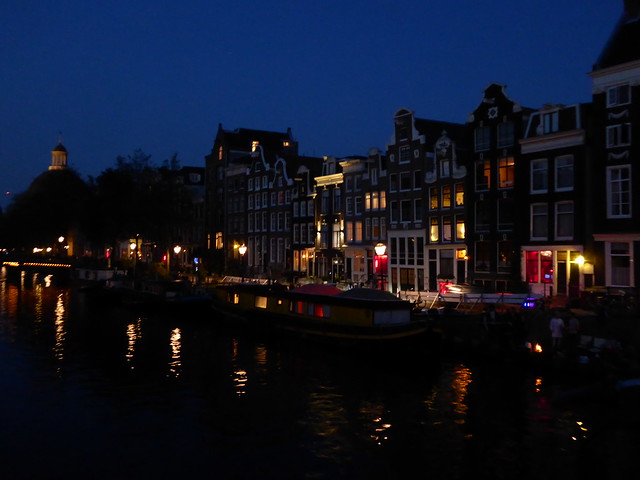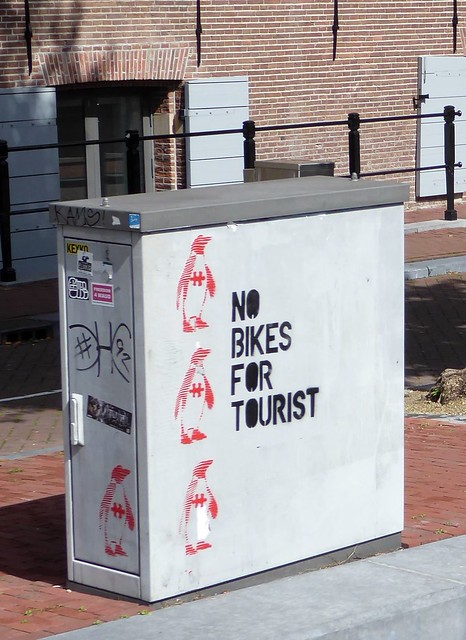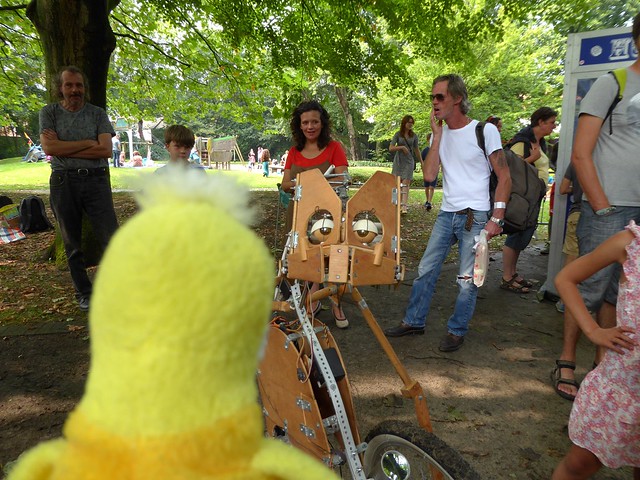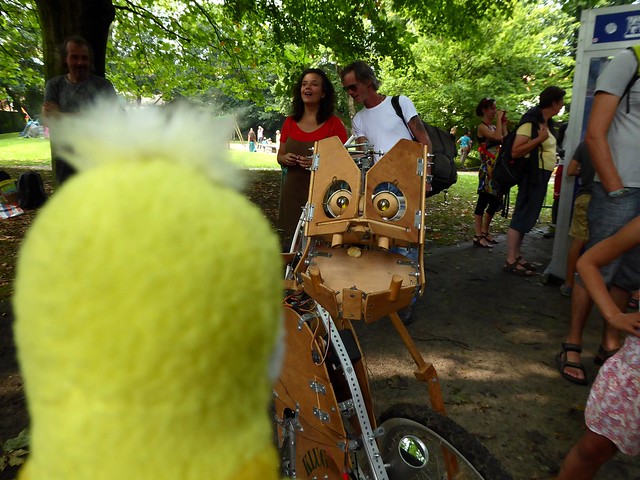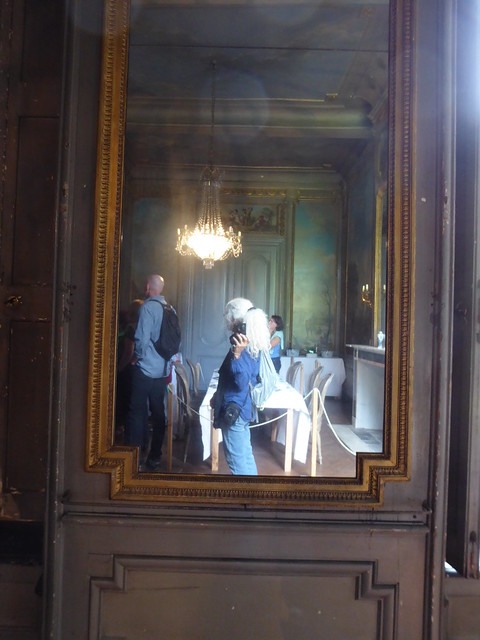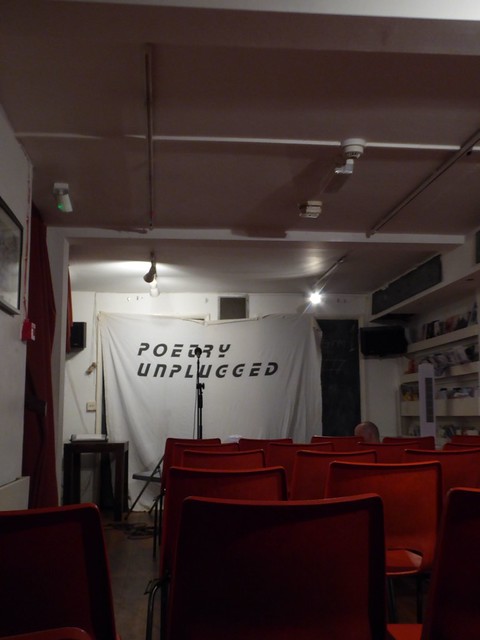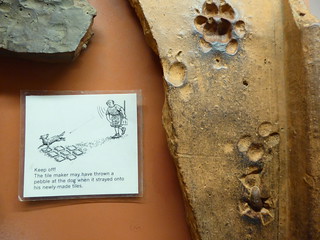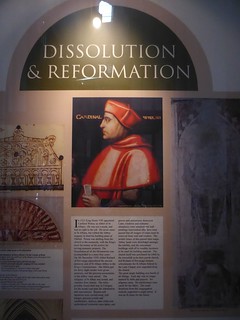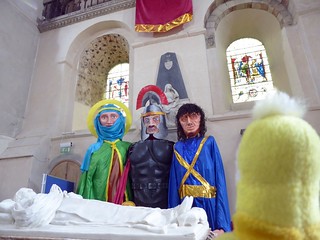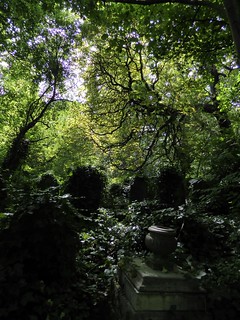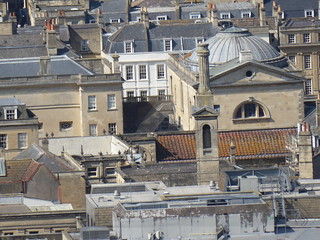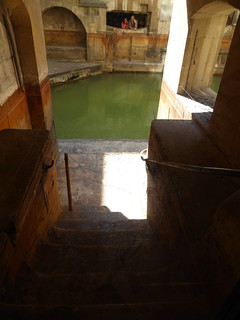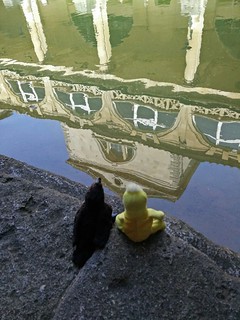 |
One of the wild
green parakeets of London |
(Note: I've gone a little wild with the formatting this time so please leave a comment if this layout doesn't work on your screen. Thanks.)
Here's a list of the main places we've visited, in order since
Bath, with a few photos and notes thrown in for good measure.
 |
Chair and photo of
1960s "middling class" with
photo of parallel world look-alikes. |
 |
| Parallel world look-alikes |
Geffrye Museum of the Home is housed in a building that was built in 1714 as an almshouse for the poor. A series of period rooms along the hall that is the spine of the building allow visitors a peek at the
homes of the 'middling class' from 17th century to the present day. In the modern section, reduced to one photo and a chair, I came face to face with a 1960s version of myself and two of my children. The likenesses between them and us was mind-blowing, definitely time shifting, parallel world look-alikes.
 |
The Queen's Horse Guard.
The horse didn't like it
and neither did the guard. |
Buckingham Palace and, of course, no photos allowed. The tickets were pricey but seemed like a must-do, given that we've been hearing about the place all our lives. We were prepared for it to be a total bust but it wasn't. In fact, it basically fulfilled my wildest childhood fantasy of what a palace should be. And, having recently visited
Brighton Pavilion, we had fun identifying treasures Queen Victoria had taken from there. Also, the highly theatrical, over-the-top decor of the music room and other less formal chambers, designed by
George IV's personal architect John Nash was, simply put, mind-blowing. It was also interesting to see photos of the Queen and Prince Philip with the Obamas and other notables in the room where the state dinners are held. As for the photo of Swami and the Horse Guard, don't blame him. I put him up to it. He was every bit as uncomfortable as the horse. It was stupid of me to get so close and the guard let me know it with a masterful withering glance. Blocks later, I still felt like an asshole.
 |
The Reckless Sleeper
by René Magritte |
Tate Modern - We both really enjoyed the
Poetry and Dream exhibit. It had works from some of my favorite painters, like
René Magritte. And then there was the inevitable black painting and the white painting, some garbage, a broken chair suspended from the ceiling, an unmade bed in a corner, and even two sacks of sand all posing as art. I could not, did not contain myself.
 |
"Art"at Tate Modern
Unmade bed |
 |
Stuff "art"
Tate Modern, Britain |
Our art crawl through Europe has led to some interesting discussions about the current state of art or "art". This morning M. sent me two good links to articles on the subject, one at
3quarksdaily and the other at Commentary Magazine,
How Art Became Irrelevant. Both are definitely worth a read if you're interested in the subject.
 |
Toeing the old
Prime Meridian line |
Greenwich to see the new Prime Meridian Line as it has moved 330 ft (101 meters) to the east. The usual crowd of people was there lined up to be photographed straddling the old line where (we thought) East met West. Then we walked over to the approximate new place where, using modern GPS technology, researchers have determined
0° longitude actually runs. According to London's Daily Mail, "it now cuts across Greenwich Park near a bin". Also we saw several deer and lots of crows, seagulls, magpies, squirrels, the lovely green wild parakeets, a grassy mound that's supposedly covering Roman ruins and walked the tunnel under the Thames.
 |
Minerva contemplating the crows
in Greenwich Park |
 |
Swami and Rembrandt
at Kenwood House |
Walked
Hampstead Heath and visited
Kenwood English Heritage House, a
17th-century country manor where we saw, among other paintings, a self-portrait by
Rembrandt and works by Hals, Turner and Vermeer. Swami especially liked the Rembrandt and the Hals.
 Winchester Cathedral Of course, the cathedral is ancient and grand. Here we took the tour. Our guide, one of several volunteers, was wonderful. She delighted us all with fascinating, quirky details about the history of the cathedral. The whole town of Winchester is built on a peat bog so, over the centuries, the massive cathedral was slowly sinking into the ground. In the early 1900s, it was in danger of collapse so a deep-sea diver by the name of William Walker was hired to do the repairs. Walker's job was to go down below the cathedral's base and find solid ground. At that point, bags of concrete were lowered down to him and, every day for six years, he worked in the total and utter dark far below ground, building a foundation. One hundred years later, Winchester Cathedral still sits firm on the foundation he built and the head from his diver's suit, a photo and plaque telling the story hold a place of honor within.
Winchester Cathedral Of course, the cathedral is ancient and grand. Here we took the tour. Our guide, one of several volunteers, was wonderful. She delighted us all with fascinating, quirky details about the history of the cathedral. The whole town of Winchester is built on a peat bog so, over the centuries, the massive cathedral was slowly sinking into the ground. In the early 1900s, it was in danger of collapse so a deep-sea diver by the name of William Walker was hired to do the repairs. Walker's job was to go down below the cathedral's base and find solid ground. At that point, bags of concrete were lowered down to him and, every day for six years, he worked in the total and utter dark far below ground, building a foundation. One hundred years later, Winchester Cathedral still sits firm on the foundation he built and the head from his diver's suit, a photo and plaque telling the story hold a place of honor within.
 |
Swami and Minerva enjoying a sunbeam
at Almshouse of Noble Poverty |
The Hospital of St. Cross and Almshouse of Nobel Poverty is not a hospital in today's sense of the word but a medieval poor house also located in Winchester. Known as "
England's oldest and most perfect almshouse", it still functions as established around 1135 by
Henry de Blois, grandson of William the Conqueror. Noticing that we were a little underwhelmed by the grounds, one of the Brothers invited us to a tour of his quarters. He explained that being chosen to live at the Noble Almshouse depends
"entirely on how you look, how you fit in. That's it". He started out at St. Cross as a porter and had been working there for about three years when a resident died and he was invited to become a Brother. I can see why. He was a gentleman, a singer and a member of the choir. He was also a cat lover. Several photos of his cat and cat decor brightened his tiny apartment. But the Brothers live a very simple life at the Noble Almshouse. They are not allowed pets so, these days, his beloved cat Effie lives with the Bishop. My memory of him is both sweet and sad.
Cambridge - King's College Chapel and Fitzwilliam Museum
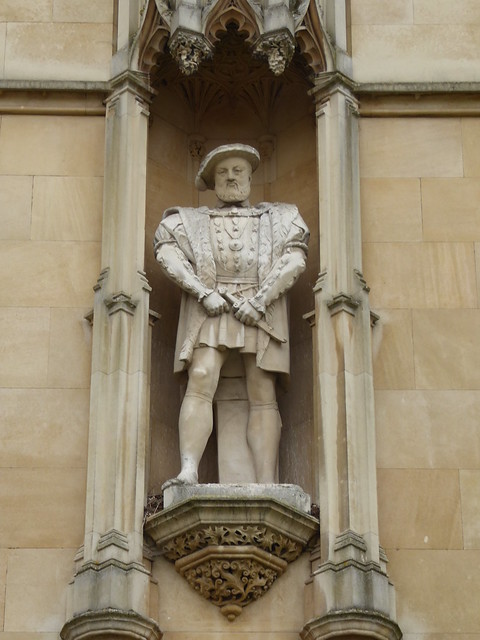 |
King Henry VIII
in Cambridge |
King's College Chapel was built by a succession of kings
but Henry VIII finished it in 1515 and, for me, his presence overshadowed the rest. That's probably because I have fairly limited knowledge of English history. In any case, it is an amazing place though it seems more a tribute to kingly glory than heavenly. Ok, a massive Ruben's masterpiece hangs over the alter but the alter itself is otherwise quite plain. And I wonder if anyone has ever counted all the swords, crowns and other royal symbols chiseled into the towering walls, pillars and ceiling.
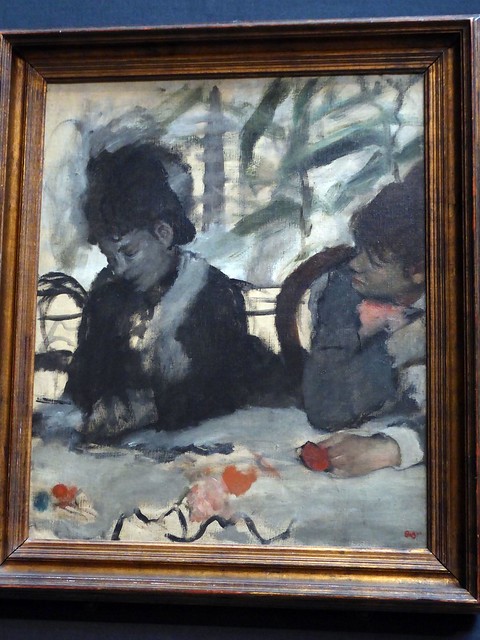 |
"At the Cafe" Degas - 1876
Fitzwilliam Museum |
And then there's the mile high wooden screen that separates the nave from the alter Henry had installed to celebrate his marriage to Anne Boleyn. It's stained dark red brown, I am sad to report, by ox blood and, originally contained a carving of Anne's head and another of a woman hanging by her hair. In Henry's day, hanging a woman by her hair until it separated from her scalp was common punishment for I don't know what. M. Lee suggested perhaps for cooking a bad meal. The portrait of the woman hanging by her hair remains but Henry commanded the portrait of Anne's head be removed after he had her beheaded at the Tower of London.
The Fitizwilliam was nice but only a few pieces really stood out. "At the Cafe" was my favorite but, when it comes to Degas, I'm easy.
 |
Me, Lee and Swami
on the Tames at Limehouse |
Walked along
Regents Canal to the Thames we were amazed to see all the
narrow boats. Until now, we didn't know about the
labyrinth of waterways running through the island. There are some 2200 navigable miles of canals and hundreds, if not thousands, of hand operated locks to move the narrow boats up and over hills on their way through the countryside at 2 to 4 miles an hour. Very cool if you're not in a hurry.
 |
| Frank and the walkie talkie |
I'm trying to finish this while sitting at St. Pancras International. We're leaving England now and headed to
Ghent, Belgium, where we'll be for the next week. Ok. M. Lee, Swami and Minerva are here with me but this morning I feel a bit the way my grandfather must have felt on his seven voyages around the world, alone and far far away.
